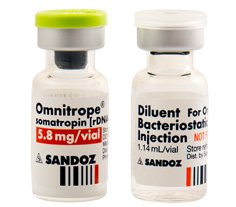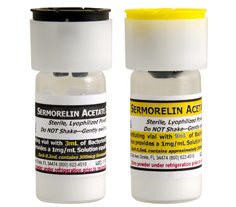Low Free Testosterone: Causes, Symptoms, Treatment

Low testosterone is a condition that affects many males and females as they age. To get an understanding of testosterone deficiency, we must first clarify what that means. A person can experience a considerable variance in testosterone levels, as they consist of the total, free, and bioavailable testosterone and influence the body in different ways. Although this report is on low free testosterone, it is first necessary to explain the difference between the three.
- Total testosterone is the sum of all testosterone in the bloodstream
- Free testosterone is the smaller portion that is unbound to a protein and available immediately for the androgen receptors to use (roughly 2 to 5 percent of the total testosterone)
- Bioavailable testosterone consists of the free testosterone as well as that which binds to the protein albumin – the albumin binding is weak, allowing that testosterone to break free and enter the cell rapidly
The majority of the body’s testosterone is bound to the protein sex hormone-binding globulin. Here, the SHBG binding is tight and requires a chemical process to separate the testosterone from the protein.
What does it mean when free testosterone is low?
Free testosterone low levels mean that there is not enough unbound testosterone available to enter the androgen receptor cells. Either the testosterone remains tightly bound to SHBG, or it undergoes excessive conversion into either dihydrotestosterone or estradiol.
Low free testosterone is a problem even when a person has normal total testosterone levels.
Causes of Low Free Testosterone in Adults
One of the causes of low free testosterone is a higher level of sex hormone-binding globulin (SHBG) that occurs with aging. SHBG is a protein molecule required to transport the steroid hormone testosterone through the bloodstream. Blood is water-soluble and testosterone is fat-soluble so it it cannot move freely through the bloodstream without the protein molecule binding. If SHBG levels are higher than normal, the testosterone cannot separate and break free to enter the androgen receptor cells. That is why some adults who have normal total testosterone levels might have low free testosterone and suffer from symptoms of Low T.
In one study of testosterone in men, the first group had normal total testosterone and low free testosterone levels. The other group in the study had the reverse – low total testosterone and normal free testosterone levels. Group one experienced the following:
- Poorer health
- Decreased bone ultrasound measurements
- Lower hemoglobin
- Fewer morning erections
- Less sexual thoughts
- More erectile dysfunction
- Increased physical symptoms and limitations
These findings help demonstrate the need for men to have adequate free testosterone, which is what the androgen receptors require to carry out their actions.
Other than the increase in SHBG levels that often accompanies aging, there are other potential causes of low free testosterone in men, as shown below:
- Causes of low free testosterone in males:
- Injury to the hypothalamus, pituitary gland, or testes
- Tumor of the hypothalamus, pituitary gland, or testes
- Surgery or radiation to treat the tumor
- Obesity – see female weight gain below
- Certain genetic and medical conditions
- Steroid, opioid, or drug abuse
- Alcoholism
- Some medications
- Treatment for prostate cancer
While women may experience a decline in testosterone also due to tumors or injuries in the hypothalamus, pituitary gland, or ovaries, they also have other issues that can influence testosterone production. These causes are listed below.
- Causes of low free testosterone in females:
- Oral estrogen – can reduce testosterone production
- Menopause – whether natural or due to an oophorectomy (surgical removal of the ovaries) a woman’s ovaries cease production of testosterone
- Adrenal insufficiency – a portion of testosterone production occurs in the adrenal glands
- Deficient DHEA or progesterone levels – these hormones are the precursors to testosterone
- Hypopituitarism – decreased pituitary gland function sending a weaker signal to the body to produce testosterone
- Weight gain – the enzyme aromatase produced in belly fat converts free testosterone into estradiol – the more fat a woman has, the lower her free testosterone and higher her estrogen levels
Many causes can contribute to low free testosterone levels in men and women.
Low Free Testosterone Symptoms
The overall effect of low free testosterone is essentially the same in men and women. The most common differences are sexual.
How can low free testosterone affect sex drive and functions in males and females?
Low free testosterone levels interfere with sexual thoughts, fantasies, dreams, and desires. In women, Low T can cause vaginal dryness resulting in painful intercourse. For males, the loss of the morning erections and other forms of erectile dysfunction are possible. Both men and women report decreased intensity in their orgasms leading to reduced pleasure.
What are the symptoms of low free testosterone other than sexual issues?
Low free testosterone symptoms in men and women include:
- Reduced exercise capacity
- Body stiffness
- Joint pains
- Increased weight gain
- Anemia
- Depression
- Sadness
- Increased stress and anxiety
- Energy loss
- Fatigue
- Mood swings
- Decreased cognitive functions
- Memory loss
- Poor focus
- Muscle mass decline
- High cholesterol, triglycerides, blood sugar, or blood pressure levels
- Infertility
- Thinning or loss of hair
Women may also experience irregular periods, PMS, and menopausal symptoms.
What are low free testosterone levels going to do if left untreated?
Ignoring the signs of low free testosterone can lead to other, more concerning health issues, including:
- Type 2 diabetes
- Cardiovascular disease
- Osteoporosis
- Dementia
- Depression
- Atherosclerosis
- Heart attack
- Stroke
- Metabolic syndrome
The symptoms of low free testosterone include fatigue, weight gain, muscle and bone loss, and reduced sexual functions.
Treatment for Low Free Testosterone
As you can see, low free testosterone can become a serious problem if left untreated. Mortality and morbidity cardiovascular rates increase in people with Low T.
Does low free testosterone need to be treated if total testosterone levels are normal?
It is crucial to address the situation of low free testosterone as that is the part of the hormone available to the body’s many androgen receptors. You can have all the total testosterone in the world, but if it remains bound to SHBG, it is not available for the body to use. Supplemental testosterone increases the amount of total testosterone so that some of it remains unbound to SHBG and ready to enter the androgen receptor cells.
What is the best low free testosterone treatment for men and women?
Here at Kingsberg Medical, our hormone specialists have years of experience treating men and women throughout the US for testosterone deficiency. Our extensive research shows the most effective treatments to be testosterone enanthate and cypionate injections for men and compounded testosterone cream for women.
To learn more about these treatments, and how to know if you have low free testosterone levels, please contact our hormone clinic for a free telephone consultation with one of our medical advisors.




















